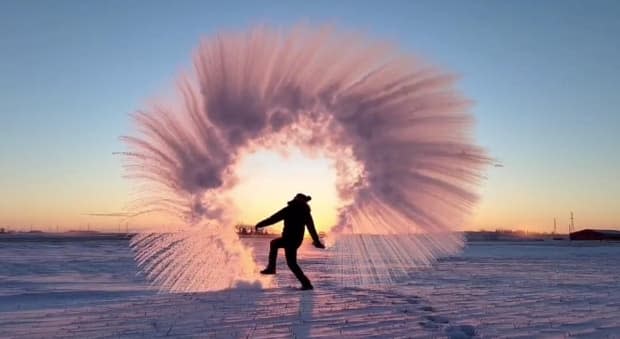Brace yourselves — southern Alberta is headed for a deep freeze. Here's why

Bitterly cold Arctic air is set to grip southern Alberta in the coming days, bringing the coldest temperatures to the region so far this winter season.
The spell of extreme cold will be accompanied by dangerously low wind chills at times, with some overnight low temperature records potentially falling across parts of Alberta during the first half of next week.
So what is causing it?
Rivers of fast-moving, upper-level winds called jet streams encircle the planet, which contain a series of waves consisting of "ridges" and "troughs" that interact with each other, influencing our weather.
In this case, the strengthening of an upper ridge punching into the high Arctic north of Alaska will cause downstream troughing to develop over the heart of North America, enabling a straight shot for air normally hovering over the dark, frozen Arctic to plunge southward into Alberta and beyond.
Temperatures across much of western Canada and parts of the northern United States will likely be the coldest relative to normal anywhere on Earth for a few days.
Temperatures plummet
In Calgary, temperatures will plummet throughout Saturday following the passage of a cold front that will also be accompanied by at least some accumulating snowfall during the day.
The coldest temperatures will come early to mid-next week, with overnight lows into the -30s and daytime highs in the -20s — with any wind likely pushing us into extreme cold warning territory.

In Alberta, extreme cold warnings are issued by Environment and Climate Change Canada when the temperature or windchill value reaches -40 or colder for at least two hours.
When temperatures are very cold, it doesn't take much wind to bring on extreme wind chill values. For instance, at -30 C, it only takes a 15km/h wind to get a windchill value of -41.
Windchill values of -40 can cause exposed skin to freeze in five to ten minutes or less, so it is certainly advisable to cover all exposed skin if needing to head outdoors, and dress in many layers of warm clothing with a wind-resistant outer layer.
The coldest overnight low temperature for Calgary could come on Tuesday, Dec. 20.
The existing low temperature record for that date in the city is -35 C, and goes back to 1921, so that will be the number to beat.
The extreme cold looks to ease later in the work week, as milder Pacific air likely flows back into the region, bringing temperatures to near or above normal values by Christmas.
The 'La Niña' effect
The cold snap comes amid background "La Niña" conditions that are now occurring for the third Northern Hemisphere winter in a row, in the first "triple-dip" La Niña to occur this century.
A La Niña occurs when sea surface temperatures in the eastern tropical Pacific are colder than normal, influencing upper air patterns around the world.
For us in western Canada, La Niña conditions typically bring colder and wetter winters than average, and this winter is likely no exception. While periods of above average temperatures are likely, this may very well not be last spell of extreme cold weather before spring.


